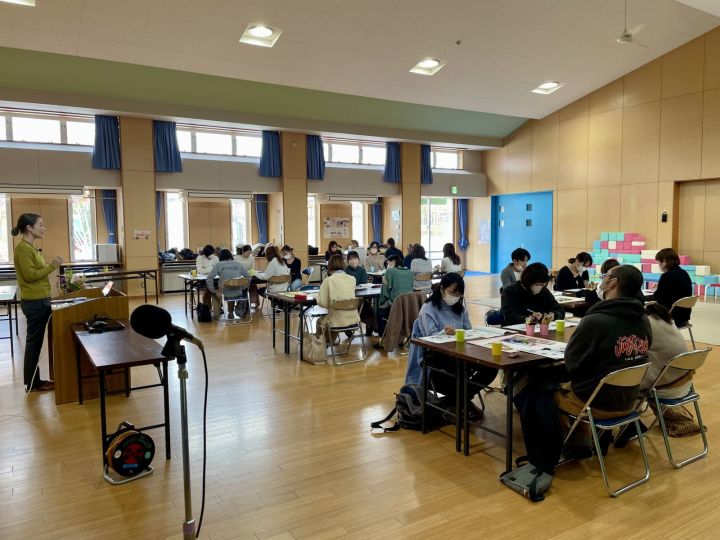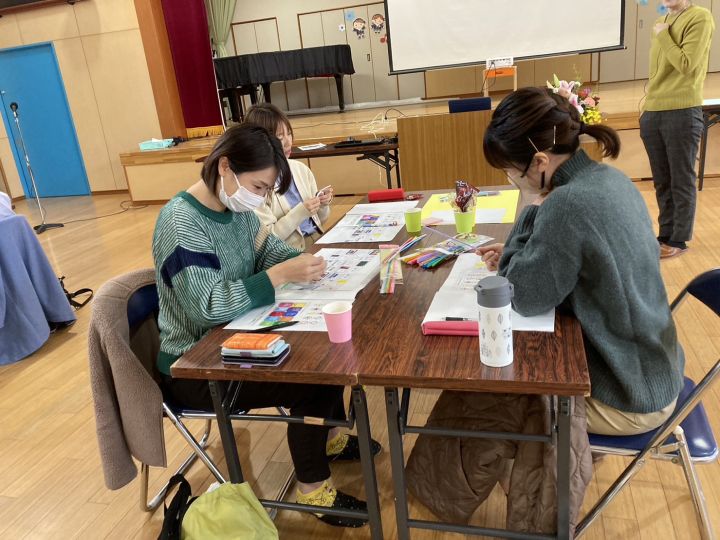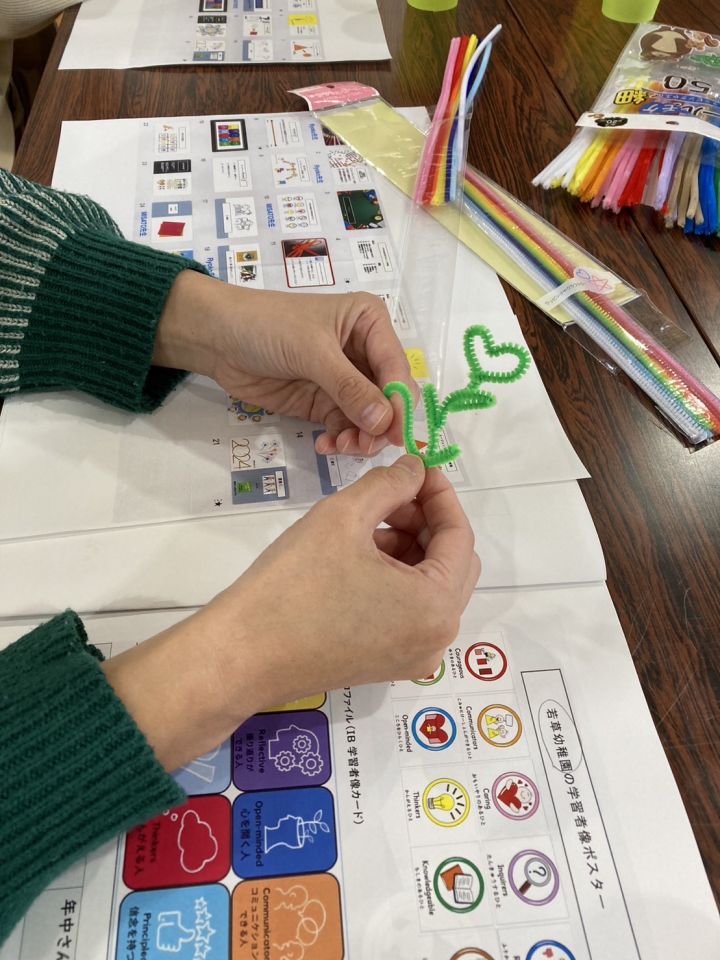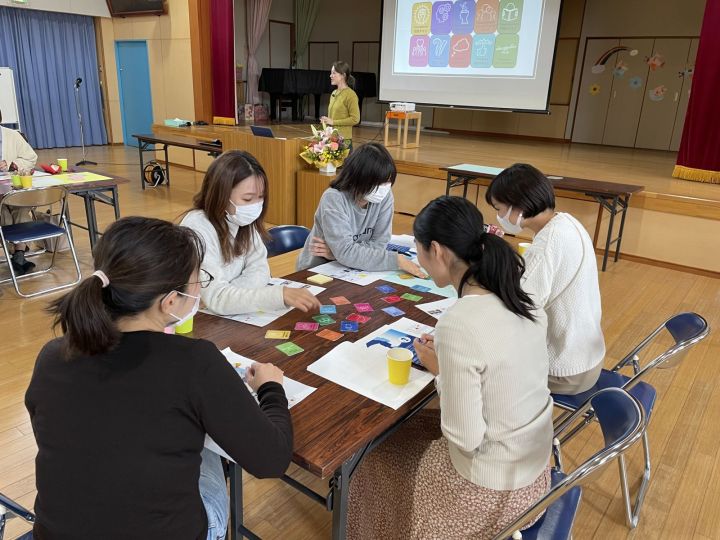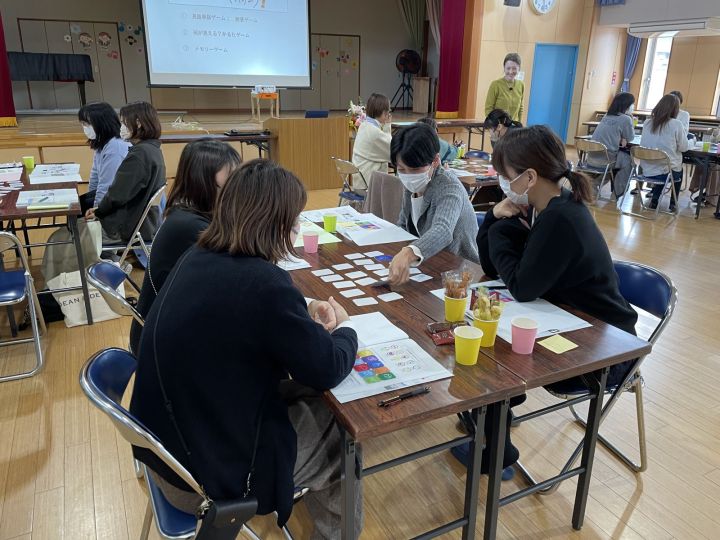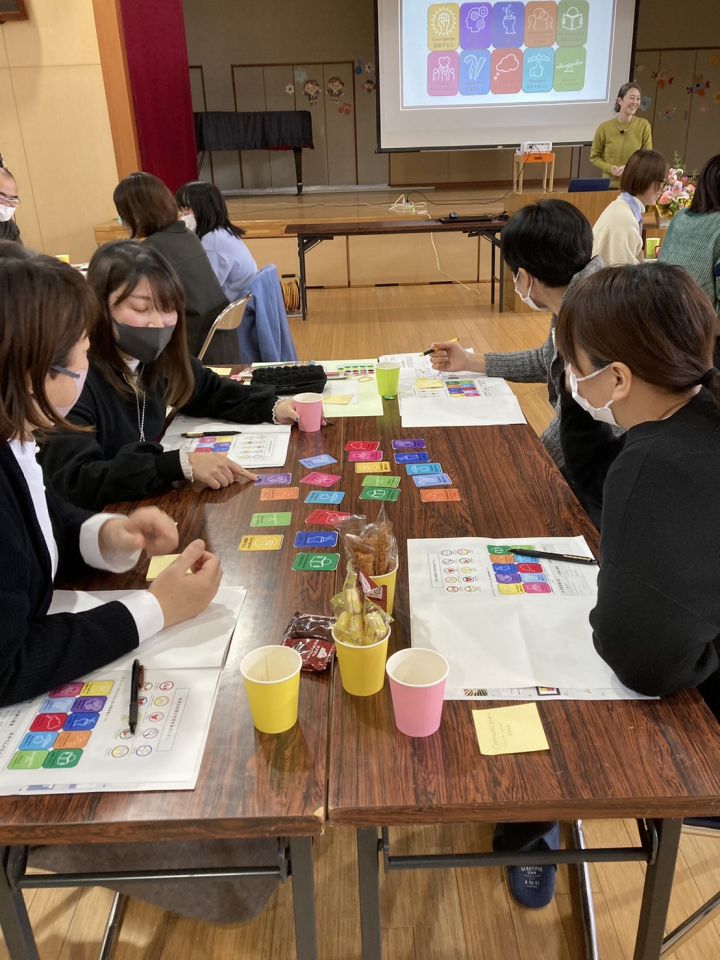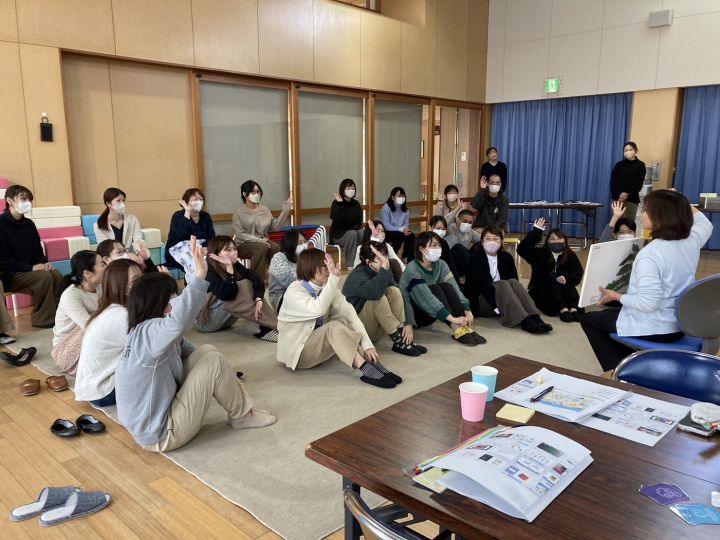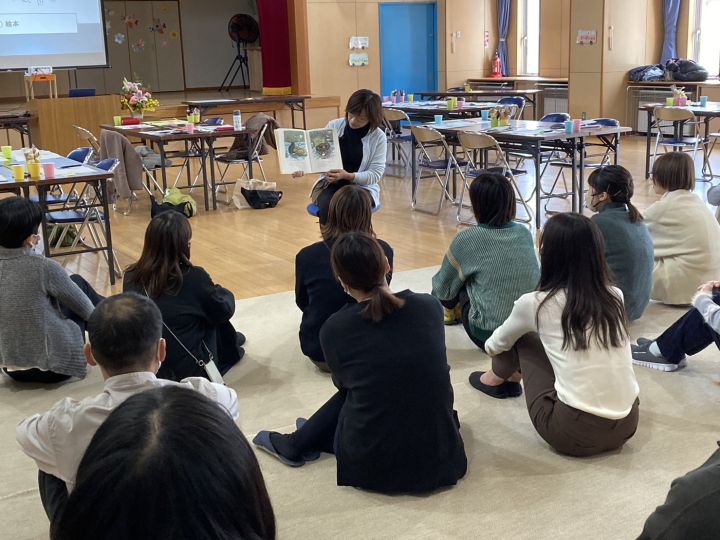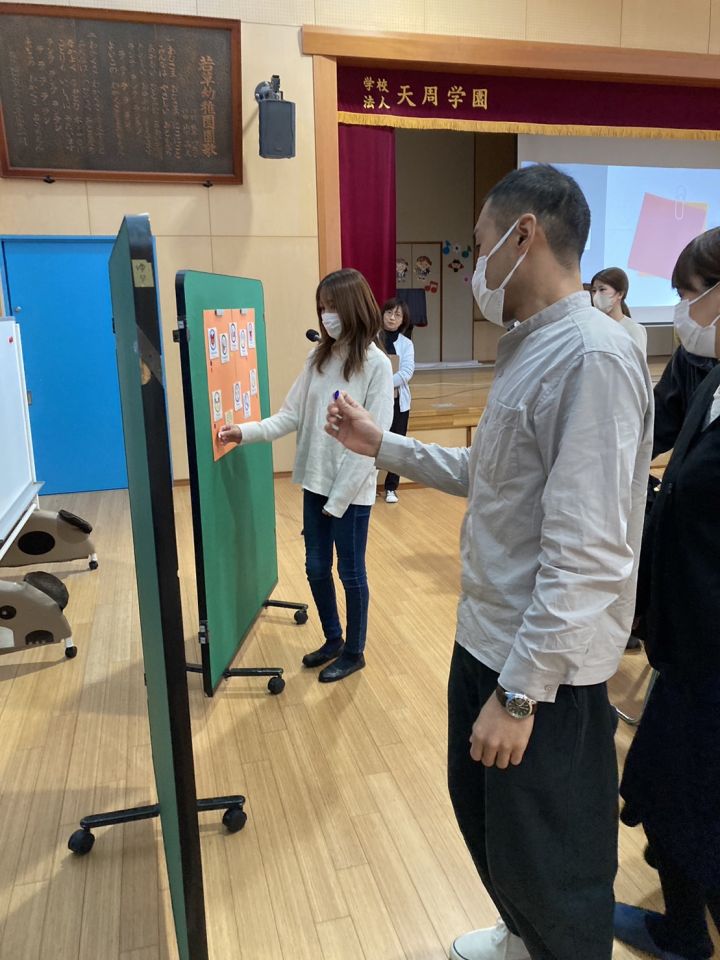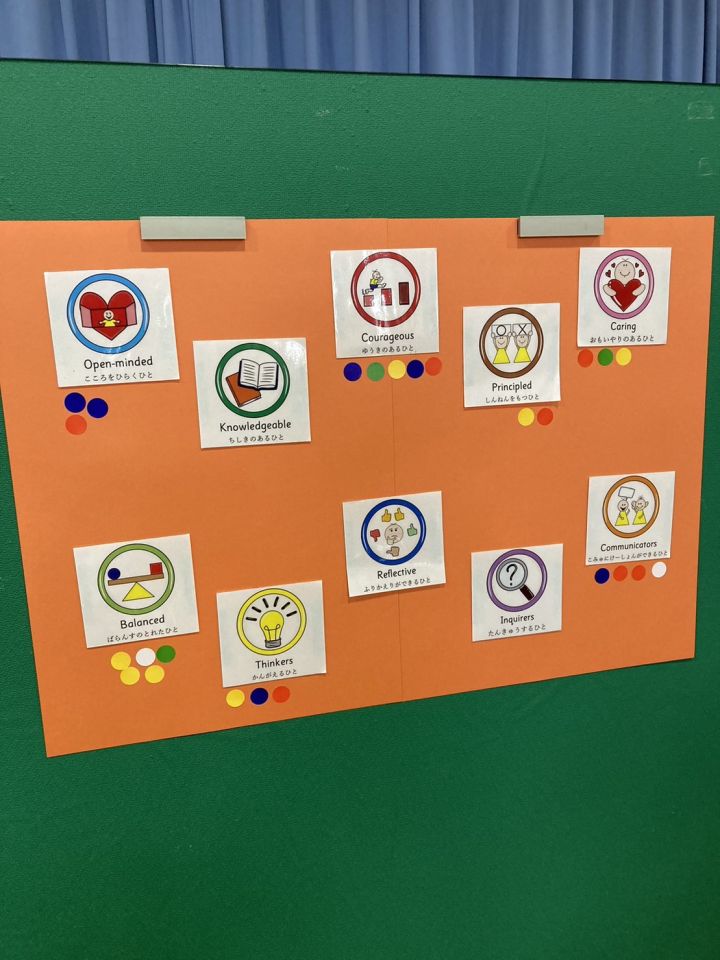K1-K3 Reflection: May to July * K1~K3振り返り: 5月~7月
*和訳は英文の下にあります
Dear Parents,
We would like to share with you what the children had done in Term 1. As for Term 2, we have many interesting activities planned for them and we look forward to having fun learning together!
保護者様、
園児たちの1学期の様子をお伝えします。2学期も、おもしろい活動をたくさん企画していますので、引き続き皆さんと一緒に楽しく学んでいきたいと思います!
NENSHO K1
-How we organize ourselves-
In this unit, the children learned English class routines, how to play and clean up (thinkers*), how to play nicely together (caring*), and how to adhere to classroom rules (principled*). Being courageous* and inquirers*, the children created opportunities for themselves to explore their individual abilities. They enjoyed watching the roleplay videos showing correct and incorrect classroom behaviors starring naughty “Yihui-chan” and good “Hunter-Kun” and “Mirai-chan”. Seeing the various behaviors made the children reflect upon their own behavior.



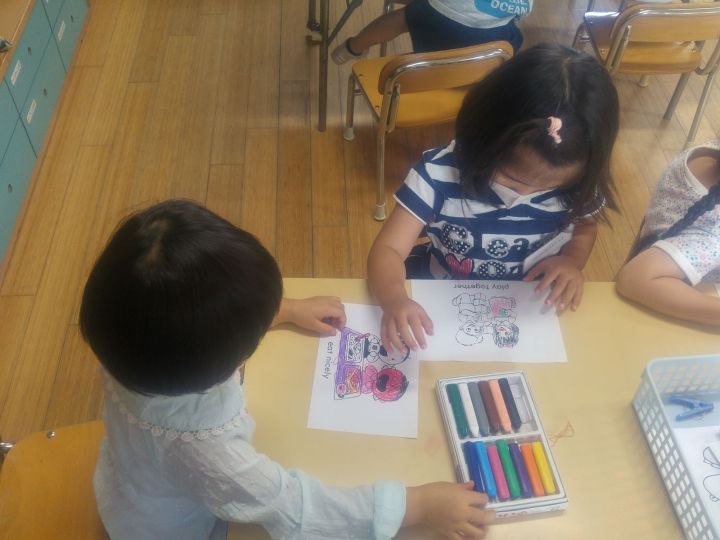


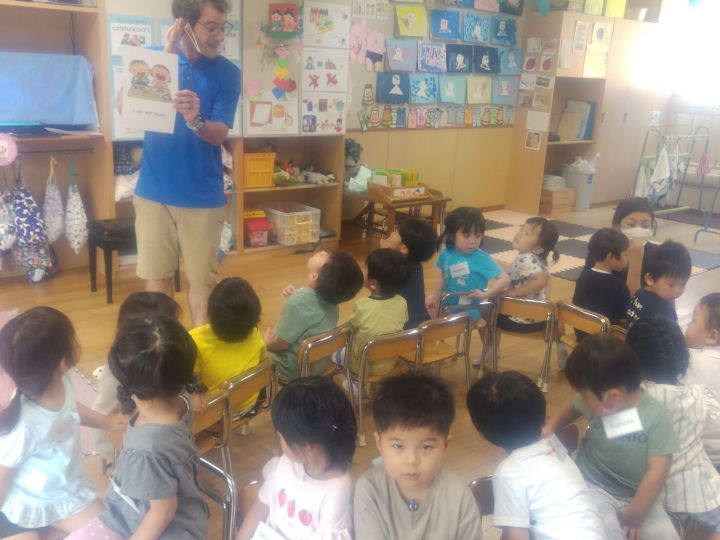
We also introduced the “Responsibilities Learning Pit” to have the children reflect upon their actions after every English lesson. We were very happy to learn that some children actually requested for the Japanese teachers to reflect on their behavior with the “Responsibilities Learning Pit” too!
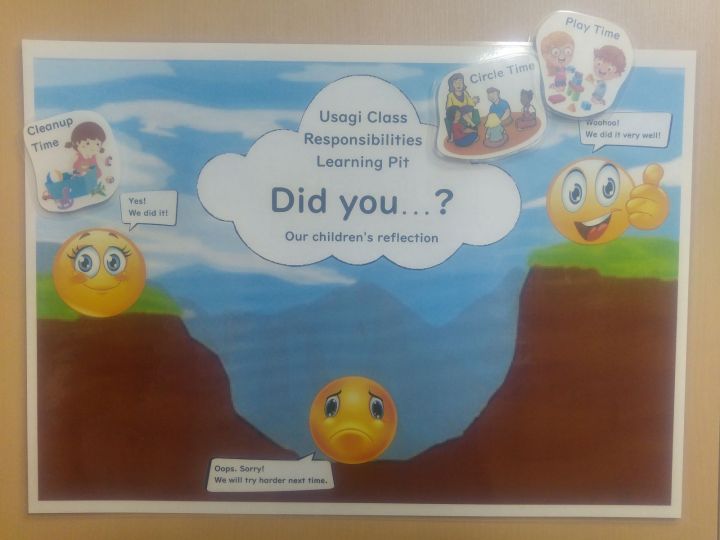
年少 K1
-How we organize ourselves-
このユニットで園児さんたちは、英語のレッスンのルーティン、遊び方と片付け方(thinkers/考える人*)、上手に一緒に遊ぶ方法(caring/思いやりのある人*)、教室のルールを守る方法(principled/信念を持つ人*)を学びました。(courageous/挑戦する人*)であり(inquirers/探究する人*)である彼らは、それぞれが持つ力を探求する機会を自分たちで作りました。悪い子の「イーフィちゃん」と、良い子の「ハンターくん」「みらいちゃん」が主演するビデオを見て、教室での良い態度(行動)と悪い態度(行動)を学びました。先生たちの楽しいロールプレイを見ながら、自分の行動を振り返りました。
英語のレッスンの終わりに、自分の行動を振り返る「ラーニングピット」を導入しました。このラーニングピットは、園児さんたち自身に、その日の自分の態度や行動がどうだったのかを振り返り、評価してもらうためのツールです。園児さんたちにも気に入ってもらったようで、英語クラスだけでなく’普段のクラスでも使っている’と聞いてとてもうれしく思いました。
-How the world works-
For this unit, the children learned about the spring environment, what we see, and spring activities, what we do. During our circle time activities, we used mystery sounds and shadow game to see if the children could make connections with the Spring things they see outside the classroom (knowledgeable*). They enjoyed listening to the sounds and guessing what made the sound. They also had fun guessing the spring item by analyzing its shadow.






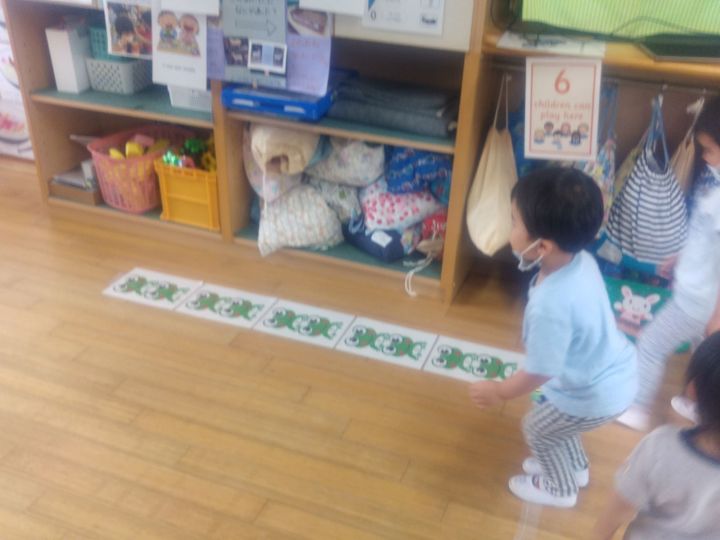
We learned about activities we do in the spring by watching videos of people gardening, flying a kite, having a picnic, planting rice, and picking strawberries. For our corner play, they loved crafting the butterfly rings and measuring the length of rice seedlings by lacing. We also did pre-assessment with the children to check their understanding by matching items to the appropriate seasons.
*Learner Profile
– Hunter sensei, Yihui sensei






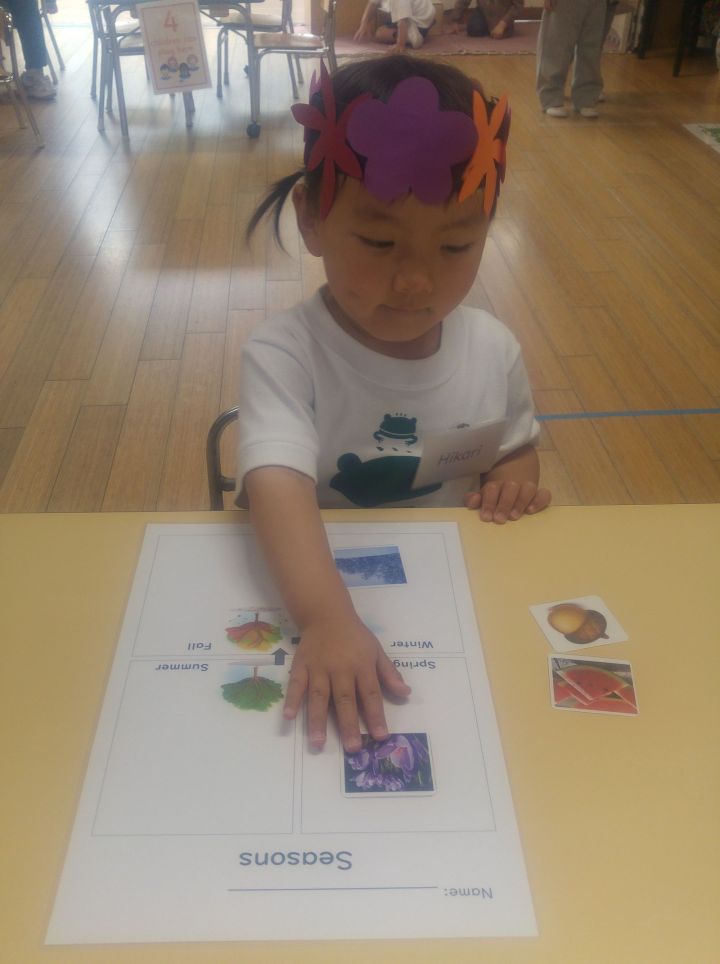
-How the world works-
まず園児さんたちは、季節と私たちの生活とのつながりを知るために、春には何がある?、春には何ができる?について考えました。サークルタイムの活動では、ミステリーサウンドとシャドウゲームを通して、園児さんたちが外で見つけた春にまつわるものと、自分の知識をつなげることができるかどうかを確認しました(knowledgeable/知識のある人*)。聞こえた音や見えた影から、それが何の音か、どんな春のアイテムか、想像を膨らませて考えたり、表現したりしました。
他にも、ガーデニング、凧揚げ、ピクニック、田植え、いちご狩りなどの動画を見ながら、一緒に春の活動を学びました。コーナープレイでは、バタフライリング(蝶々の指輪)を作ったり、ひもで稲の苗の長さを測ったりしました。園児さんたちの季節に対する認識や理解を確認するために、事前評価では、季節に合わせてアイテムをマッチングさせるパズルで遊んでもらいました。
*学習者像
– ハンター先生、イーフィ先生
NENCHU K2
-Who we are-
“What makes you happy?”, was the first question we asked the children when we started the first half of the unit with the central idea Building better relationships leads to our happiness. Each kid had a chance to choose 4 from 10 photos that makes them happy and ranked it.




We wonder how their answers will change after this unit in March (reflective*).
We first explored this unit by playing the game, “Which one do you like?” In this game, the children learned more about each other’s similarities and differences. They really enjoyed playing in different learning stations where they could express the things they like and love to do. The K2 children expressed their love for art through coloring pictures and making friendship bracelets. Others expressed their love for playing through Karuta games and a Rock-scissors-paper game. Some expressed their love for the Alphabet through exploring the Alphabet Pokemon corner, some letter finding activity using rice bottles, and some tracing letters. A lot of them expressed their love for reading through exploring different books we read in class.






With these activities, the children learned to share and wait for their turns (caring*). The children also learned different kinds of emotions to further express how they feel (communicators*).





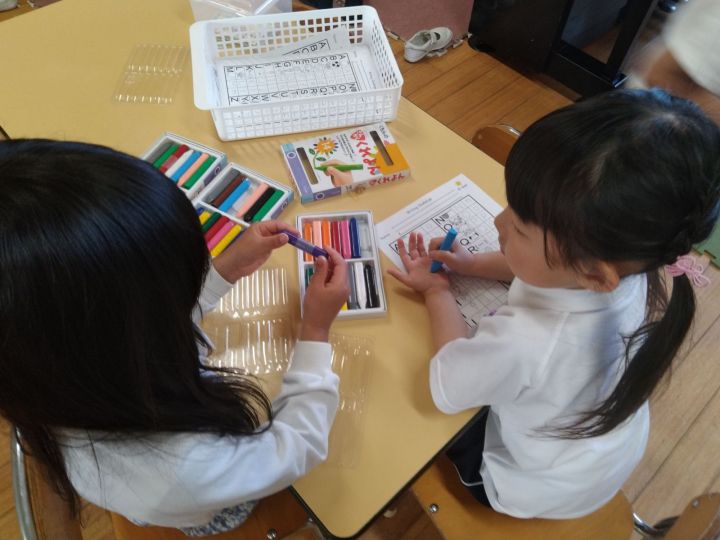
We also observed that the children are becoming more thoughtful communicators* in English class. We practice listening to others and showing respect by following the Essential Agreements that we all made together (principled*).






The children have really enjoyed engaging with stories read during story time; especially books about friendship. We have noticed that they are becoming more (open-minded*) to different ideas and how to be a better friend to one another (reflective*). At the end of the first part of the unit, we had a reflection about the books we read in the class.



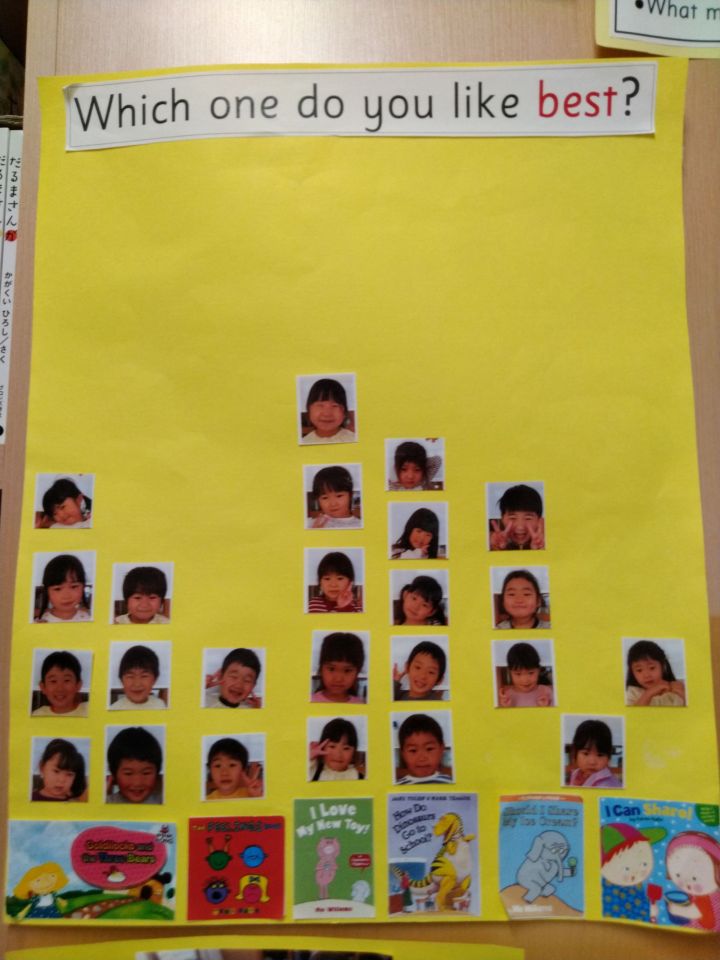
年中 K2
-Who we are-
「何があなたをHappy(幸せ)にしますか?」。これは、セントラルアイデアを理解するために、園児さんたちに聞いた最初の質問です。より良い関係を築くことは私たちの幸せにつながります。ひとりひとりに、10枚の写真の中から自分を幸せにするものを4枚を選んで、さらにそれをランク付けする作業に取り組んでもらいました。
この活動の答えが今後の学びを通してどのように変わっていくのか、とても興味がありますので、引き続き観察しています。(reflective/振り返る人*)。
さらに、「どれが好き?」というゲームを使ってこのユニットを探求しました。このゲームを通して、自分と友達との類似点や相違点を知り、それから自分が好きなことややりたいことを表現する色々なコーナーワークで遊びました。ぬりえをしたり、友情のブレスレットを作ったりして、アートを通して友情を表現する園児さんもいれば、お友達とカルタやじゃんけんゲームで、遊ぶことを思いっきり楽しんだ園児さんもいました。アルファベットのポケモンコーナーを探索したり、おにぎりを使って文字を見つけたり、その文字をなぞったりして、アルファベットへの強い興味を示した園児さんもいました。年中のみなさんは共通して、英語の絵本の読み聞かせを通して読むことへの興味も示してくれました。
様々な活動の中で、園児さんたちは、自分の順番を待つことや、物を共有したり分け合うことを学び(caring/思いやり*)、自分の気持ちを表現するためにさまざまな言葉や表現を学びました(communicators/コミュニケーター*)。
英語のレッスンの中で、子どもたちがより思慮深いコミュニケーター*になっていることもわかりました。皆で一緒に考えて決めたクラスの合意(principled/信念を持つ人*)に従って、他の人の話をよく聞き、相手に敬意を示す練習もしました。
先にも述べましたが、園児さんたちは絵本の読み聞かせを本当に楽しんでいます。特に取り上げて読んだ友情の本の読み聞かせの中で、講師からの色々な問いかけに対してより (open-minded/オープンマインド*)になり、また自分とは違うアイデアに対しても、より良い態度(reflective/振り返る人*)で受け入れるようになっています。このユニットの終わりに、クラスで読んだ本についても振り返りをしました。
-Sharing the planet-
We developed our creativity by drawing a fish with its different parts using various lines, colors and shapes in this unit. The central idea is various ideas and creativity create a better environment. We first focused on the “Fish Challenge” where they drew the parts of the fish and its habitat. They later on improved their knowledge and drawing through books, videos and observing the fish at school (reflective*).







In connection with this activity, we learned that our actions have consequences in our community. The children learned the value of saving water in school and later on extended that knowledge to their homes (caring*). We are aiming to help the children to be more responsible learners by taking care of school materials (principled*), our shared spaces, different resources and be caring* to one another.







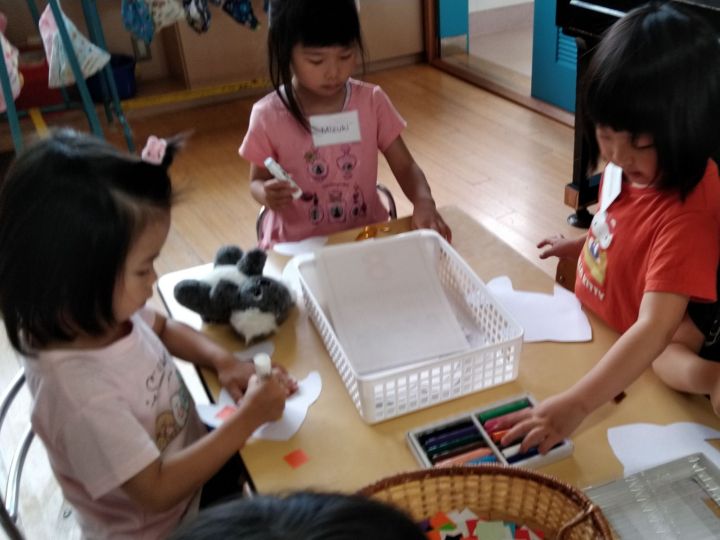
We also explored the concept of ‘half’ through different books, activities and games to further enhance our creativity and imagination. We wanted to help the children think about what two halves could create, even though the halves were different (open-minded*). For example, we asked what shape you would get if you have half a triangle and half a square. In a later lesson, we connected this new knowledge with what the children had learned about fish to create their own unique sea creature. We saw creatures such as half Octopus half Sharks and half Whale half Turtle as well as many other creative combinations. The children had lots of fun making their own sea creatures.
We are looking forward to exploring the next unit about the past, present and future and reading many stories with everyone!
* Learner Profile
– Fred sensei, Olivia sensei





-Sharing the planet-
このユニットでは、さまざまな線、色、形を使い、様々なパーツを観察して魚を描くことで創造力を高めました。セントラルアイデアは、さまざまなアイデアと創造性がより良い環境を作り出す。まず、魚の一部とその生息地を描く「フィッシュチャレンジ」に挑戦してもらいました。その後で彼らの知識を増やすために、本やビデオを通して魚を観察してからもう一度絵を描きました。園でもどじょうやめだかを観察しました(reflective/振り返る人*)。
この活動に関連して、年中さんは自分の行動が私たちのコミュニティに影響を与えることも学びました。園児さんたちは園で節水することの大切さを学び、その知識をお家でも活かしているようです。(caring/思いやりのある人*)。水だけに限らず、園の教材(principled/信念を持つ人*)、共有スペース、さまざまな道具などを大切にし、思いやりを通して、園児さんたちがより責任ある学習者になれるよう、私たちはサポートして行きたいと考えています。
また、さまざまな本、アクティビティ、ゲームを通じて「半分」の概念を探求し、創造力と想像力をさらに高めました。「半分」が違っていても、その2つの半分から何を生み出すことができるか、想像力を使い、オープンマインドで(open-minded/オープンマインド*)で考えることをサポートしました。(たとえば、半分の三角形と半分の正方形だったらどんな形になるかを考えたりしました)その後のレッスンでは、この新しい知識を、魚の学習と結び付けて、独自の海の生き物を作りました。タコの半分、サメの半分、クジラの半分、カメの半分などの生き物と他のものとの創造的な組み合わせが生まれました。園児さんは皆、自分たちで新しい独自の海の生き物を作るのを楽しんでいました。
次のユニットでは、過去、現在、未来について探求し、皆さんとさらに色々な絵本を読むことを楽しみにしています!
*学習者像
– フレッド先生、オリビア先生
NENCHO K3
-How we express ourselves-
We started the school year with this unit which will be on-going for the whole year. The central idea is that our behaviour and attitude can affect others. We first explored the concept of same and different via videos, books, games and realia in our circle time. The children had lots of fun finding the odd picture and categorising things into same/different groups. They shared ideas (communicators*), explained using “why and “because” (thinkers*) and being open-minded* to the difference in other people’s thinking.


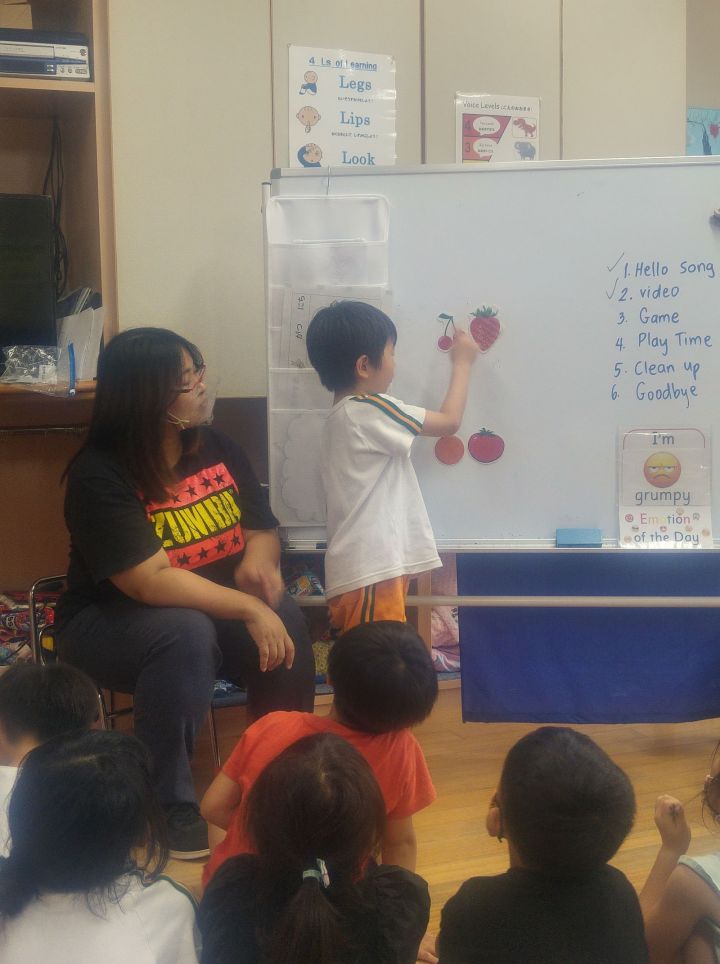
For play time, we further reinforced the learner profile attributes and skill development with activities such as spot the difference worksheets, using same resources to make different things, complete the picture (circle, square, triangle) etc. We also did a “before” assessment (grouping of different transportation) with the children. An “after” assessment will be done later to see if there’s a change in their perception.










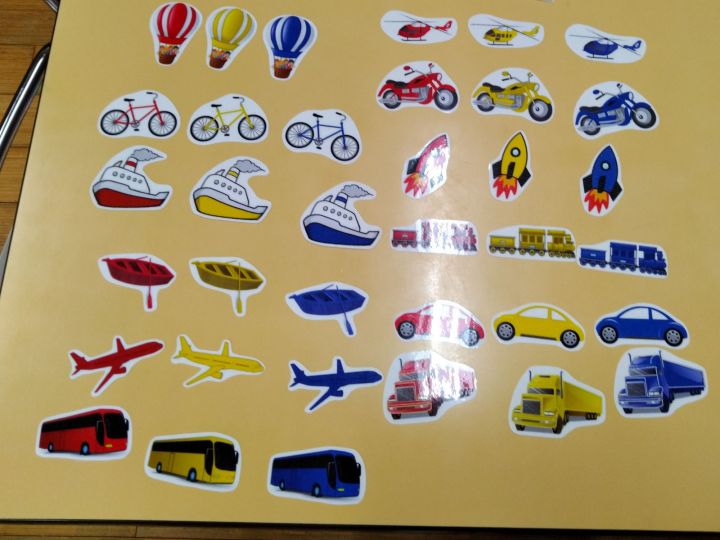
年長 K3
-How we express ourselves-
このユニットで1年が始まりました。このユニットは1年間継続されます。セントラルアイデアは、私たちの行動や態度が他の人に影響を与える可能性がある。最初に、サークルタイムで、ビデオ、本、ゲーム、実物を介して、同じものと異なるものの概念を探求しました。次に年長さんたちは絵を見て同じ/違うグループに分類しました。その後で、皆のアイデア(communicators/コミュニケーター*)を共有し、「理由」と「根拠」(thinkers/考える人*)を使って自分の考えを説明し、お友達との考え方の違いに対して(open-minded/オープンマインド*)であることを学びました。
遊びの時間では、違いを見つける、同じ材料を使ってさまざまなものを作成する、絵(円、正方形、三角形)を完成させるなどのアクティビティがあり、それらを通して学習者像とスキルを高めました。ビフォーアフターを取り入れ、ビフォーの評価を行いました。(異なる交通機関のグループピング)。アフターの評価はこれから行われます。彼らの認識に変化が現れるかどうかとても楽しみです。
-How the world works-
For this unit, we are looking at how water and light are related to our lives. We focus on how these elements affect the growth of trees which we always see in our daily environment (reflective*)



The children did a river hike on the first day of the summer vacation. To allow them to better appreciate the function of water in our lives, we did a water sound game with them before the holidays. We played different sounds of water (dripping tap, dish washing, toilet flushing, water pouring, shower, river flowing, waterfall, puddle, sea waves) to see if they can make the connection. We saw many great thinkers* and communicators*.



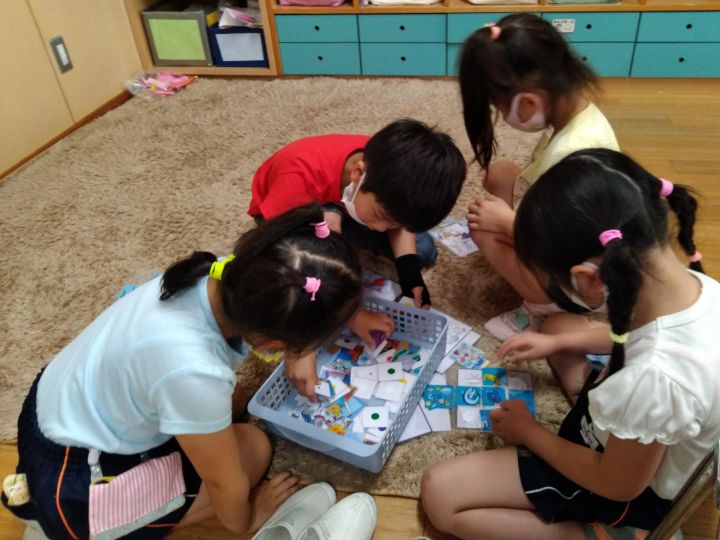
The children were also given the “Tree Challenge” which consists of 3 levels. For Level 1, the children had to draw their impression of a tree. It was really interesting the drawings they created. For Level 2, we introduced the different parts of the tree (roots, trunk, branch, fruit/flower, leaf) with video and game.








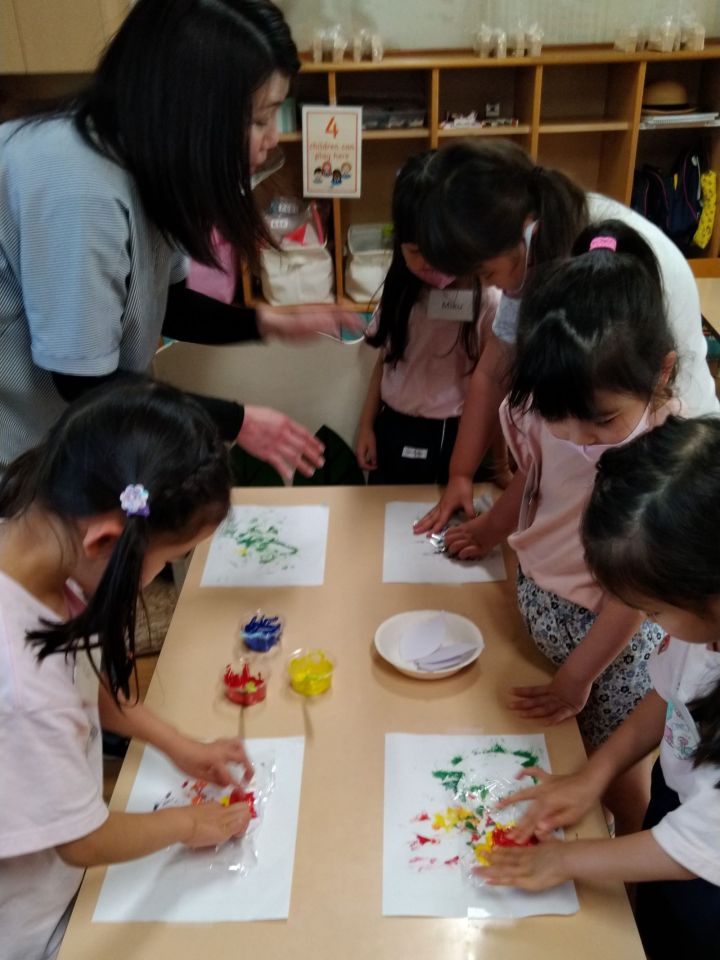
The children were asked to draw again their impression of a tree with the “Tree Criteria”. They had to include all the 5 parts in their drawings. The change from Level 1 drawing to Level 2 was amazing! The initial basic form was transformed into trees illustrated with the various parts and colours. We will be doing Level 3 next which will include even more details. Looking forward to their final wonderful creations!
* Learner Profile
– Olivia sensei, Yihui sensei

-How the world works-
このユニットでは、水と光が私たちの生活にどのように関係しているかを考えます。こらの要素が、普段目にする木の成長にどのように影響を与えるかに注目しました。(reflective/振り返る人*)
年長さんたちは夏休みに源流体験をしました。実はこの体験の前に、水の機能をよりよく理解してもらうために「水の音のゲーム」をしました。色々な水の音(蛇口から落ちるしずくの音、食器洗いの音、水洗トイレの音、お茶を注ぐ音、シャワーの音、川の流れ、滝、水たまり、海の波の音)を聞いて、これらの音が身の回りの何と結び付いているかを確認しました。この過程で、沢山の(thinkers/考える人)* と(communicators/コミュニケーター*)が現れました。
年長さんはまた、3つのレベルで構成される「ツリーチャレンジ」の課題にも挑戦しました。レベル1で園児さんたちは、それぞれ自分の持つ木のイメージを描きました。(彼らが描いた絵は素敵でとても面白かったです!)レベル2では、映像とゲームを使い、木のさまざまな部分(根、幹、枝、果実/花、葉)を紹介しました。「木の部分のクライテリア」を導入した後で、もう1度木のイメージを描いてもらいました。2回目はクライテリアで観察し学んだ5つの部分が含まれていることが期待されます。そしてレベル1の描写からレベル2への変化には素晴らしいものがありました。園児さんたちの描く木には、さまざまなパーツが加わり、観察が反映されたものに変化しました。次はレベル3を行いますが、さらに詳細な部分が加わります。年長さんのレベル3の素晴らしい作品を今から楽しみにしています!
*学習者像
– オリビア先生、イーフィ先生
翻訳:美里先生
